This gangway is also known as the Derby Canal Railway. The township of Little Eaton is situated 3¼ miles north-north-east of Derby and 4 miles south of Belper, on the banks of the river Derwent where it marks the western boundary of Erewash.
Following authorisation by Parliament, work began on the construction of the Derby Canal with Benjamin Outram as the Consulting Engineer. The canal was just over 14-miles long with nine broad locks and it ran from Sandiacre on the Erewash Canal, through Borrowash, Spondon and Derby to Swarkeston on the Trent and Mersey Canal. At Derby there was a 3⅛-mile long branch (Little Eaton Branch Canal) heading northwards to the village of Little Eaton with four broad locks and a short branch in Derby, with one lock, that connected with the river Derwent. At Little Eaton there was an interchange with a tramway, first proposed by William Jessop on the 3 November 1792, which became known as the Little Eaton Gangway. The purpose of this tramway, which was some five-miles long, was to act as a feeder to the Derby Canal by carrying coal from Denby and Kilburn (Kilbourne) down to the canal at Little Eaton via Coxbench. The whole course of the Derby Canal and the Little Eaton Gangway was in the County of Derbyshire.
Work on the construction of the tramway commenced in 1793 and the first batch of cast-iron rails was ordered from Joseph Butler, an ironmaster of Wingerworth near Chesterfield. These rails were 3-feet long and they weighed 28lb. Under the direction of Benjamin Outram, the tramway was completed in May 1795 and it had a single track, of 3 feet 6 inches gauge, with passing places. Some years later, Robert Stevenson reported that, 'Mr Benjamin Outram, an engineer of acknowledged ingenuity and merit constructed the railway at Little Eaton in Derbyshire where the plate-rail was adopted, with the flanges cast upon the rails, for the direction of the waggons, instead of having them upon the wheels as is the case in the edge-railway'. This observation by the eminent engineer, Robert Stevenson, confirms that the Little Eaton Gangway was laid with L-section, cast-iron rails.
In connection with this, the Lincoln & Stamford Mercury for 16 August 1793 carried an advertisement for oak sleepers 4 feet 6 inches long squared at each end for a length of 9 inches. This advertisement suggests that stone sleeper blocks were not used at the time of the tramway's construction. At this distance in time from these events and with no material evidence, the dimensions of these sleepers do not fit easily with a gauge of 3 feet 6 inches, as the distance between the squarings was 3 feet and not 3 feet 6 inches. However, it does suggest that the sleepers were laid across the track in the manner of modern sleepers. Subsequently, the track was re-laid in accordance with Outram's specifications using stone sleeper blocks and L-section cast-iron rails to a gauge of 4 feet 2 inches and there is photographic evidence of this.
The development of iron railways (or tramways as they soon became known) in the pre-locomotive era is interesting and it is a story in which Benjamin Outram and his business partner, William Jessop, took leading roles. Outram, more than anyone else, was responsible for the promotion of iron railways, which at the time were also referred to as plate railways. Notwithstanding this, William Jessop was the engineer for the Surrey Iron Railway that was also constructed with L-section, cast-iron rails.
Outram's first tramway was a line, just over a mile in length, constructed for use by his own company, Benjamin Outram & Company, to carry limestone from quarries at Crich to Bullbridge Wharf on the Cromford Canal. This dates from 1793 and it had a gauge of 3 feet 6 inches, the rails and waggons being supplied by Benjamin Outram & Company. Later in the same year, work began on the construction of the Little Eaton Gangway and in the following year work began on the construction of the Peak Forest Tramway, which was the feeder for the Peak Forest Canal for the purpose of carrying limestone to the canal.
The Little Eaton Gangway closed in July 1908 and the photos below are of the last gang of waggons to travel down the full length of the tramway, from Denby to Little Eaton, on the day of its closure.
Gallery
Click the first thumbnail to start viewing and
move forward by clicking on the right side of the photo.
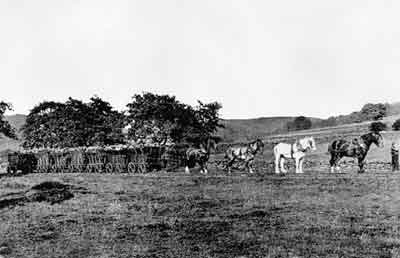 |
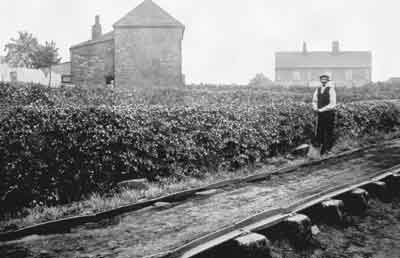 |
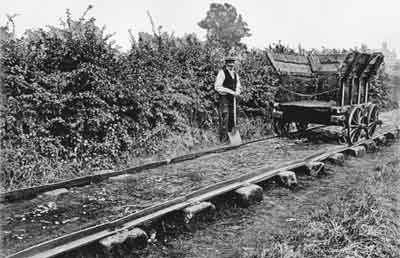 |
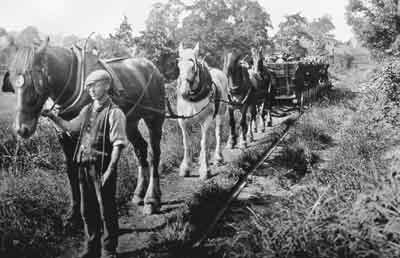 |
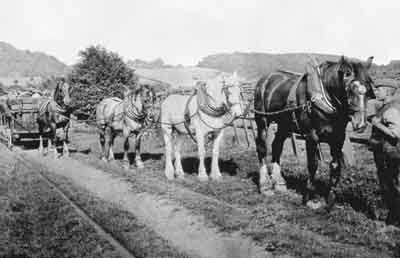 |
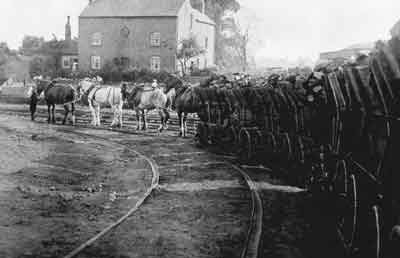 |
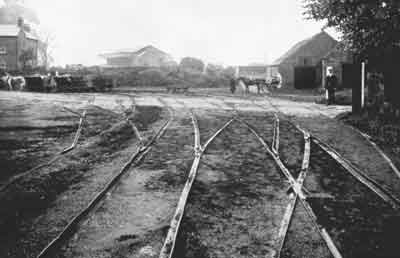 |
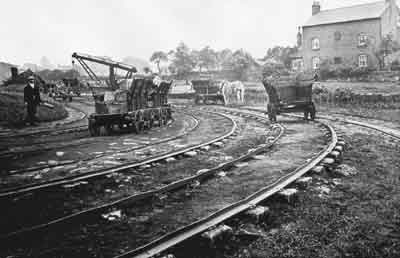 |
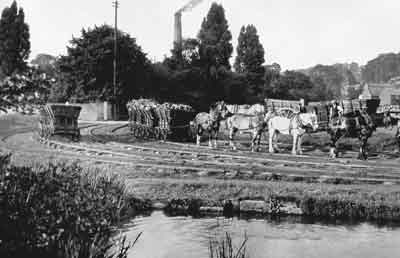 |
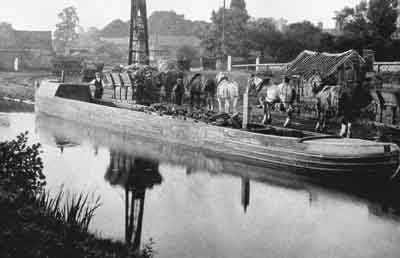 |
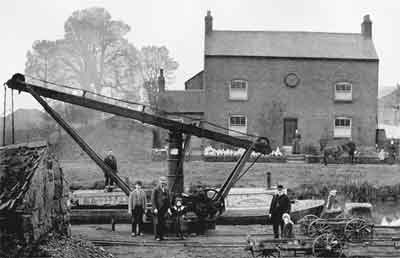 |
